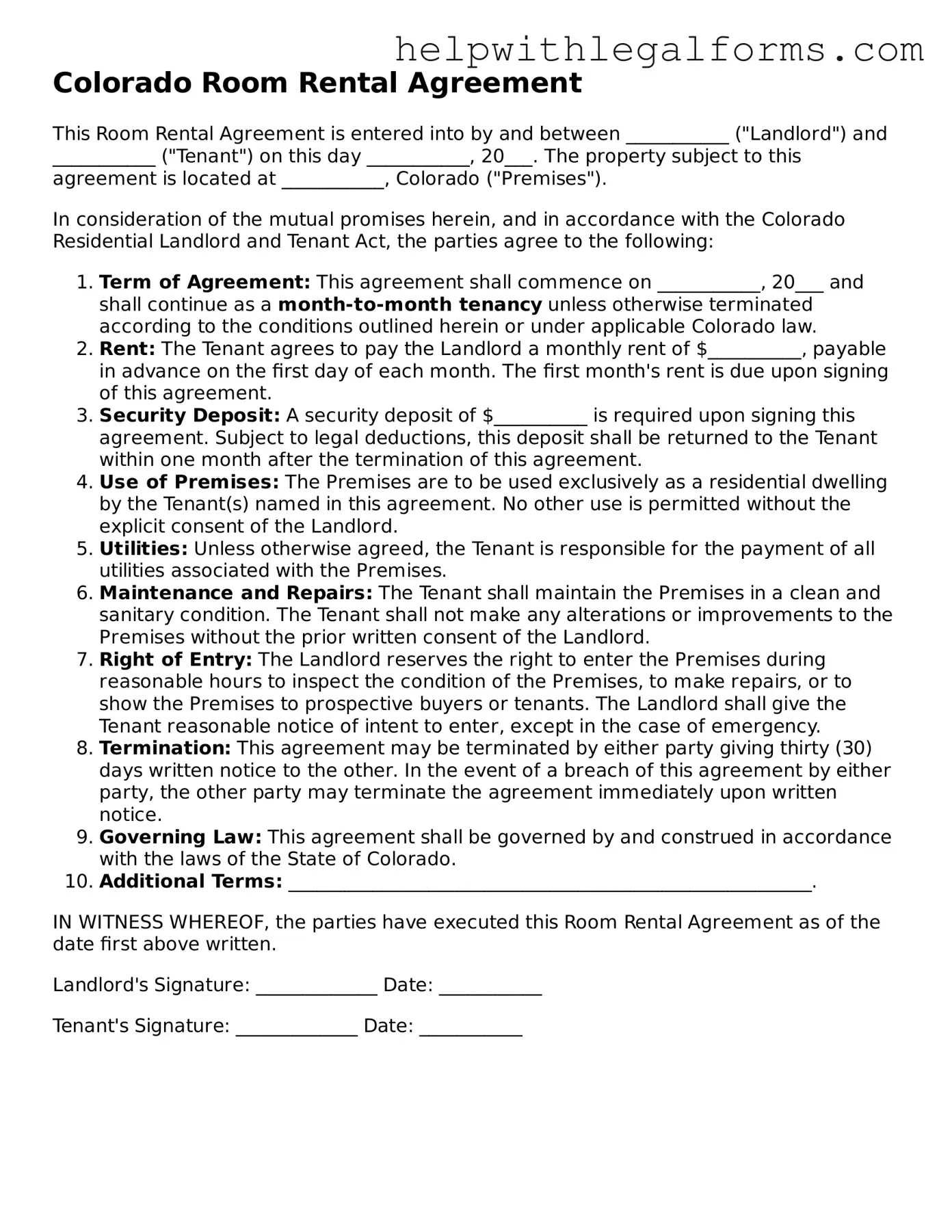What is a Colorado Room Rental Agreement form?
A Colorado Room Rental Agreement form is a legal document that outlines the terms and conditions under which a room within a property is rented. It typically includes details on rental payments, security deposits, rules regarding use of common areas, and the rights and responsibilities of both the landlord and tenant. This form is used specifically within the state of Colorado, ensuring compliance with state laws governing rental properties.
Who needs to sign the Colorado Room Rental Agreement form?
The agreement must be signed by the landlord of the property or their legal representative, and the tenant who will be renting the room. In some cases, if there are co-tenants, each tenant may be required to sign the agreement as well, to acknowledge their understanding and agreement to the terms laid out in the document.
Is a security deposit always required for a room rental in Colorado?
While Colorado law does not specifically mandate a security deposit for room rentals, most landlords opt to require one. This deposit serves as financial protection for the landlord if the tenant causes any damage to the property or fails to pay rent as agreed. The terms regarding the security deposit amount, conditions for its return, and any deductions that may be made should be clearly stated in the Room Rental Agreement.
Can the landlord change the terms of the Room Rental Agreement after it has been signed?
Once the Room Rental Agreement has been signed by both parties, the terms cannot be changed unless agreed upon by both the tenant and the landlord. Any modifications to the agreement should be made in writing and signed by both parties to ensure legality and prevent misunderstandings.
What happens if the tenant needs to move out before the end of the agreement?
If a tenant needs to move out before the agreement's term ends, they should first review the Room Rental Agreement to understand any terms related to early termination, such as notice periods and penalties. It's advisable for the tenant to discuss their situation with the landlord directly to see if an amicable solution can be reached, possibly including finding a replacement tenant or paying an agreed-upon amount to compensate for the early departure.
How are utilities handled in a Room Rental Agreement in Colorado?
The handling of utilities in a Colorado Room Rental Agreement can vary widely based on the landlord's preferences and the specifics of the property. The agreement should clearly state which utilities are included in the rental price, which ones are the responsibility of the tenant, and any procedures for paying shared utility bills. This clarity helps prevent disputes over utility payments.
Are pets allowed in a room rental situation, and if so, how is that managed in the agreement?
Whether pets are allowed in a room rental depends on the landlord's policy. If pets are permitted, the Room Rental Agreement should specify any conditions or restrictions regarding pet ownership, such as types of pets allowed, size or breed restrictions, and any additional security deposit or rent required. This ensures that both the landlord and tenant have clear expectations concerning pets.
